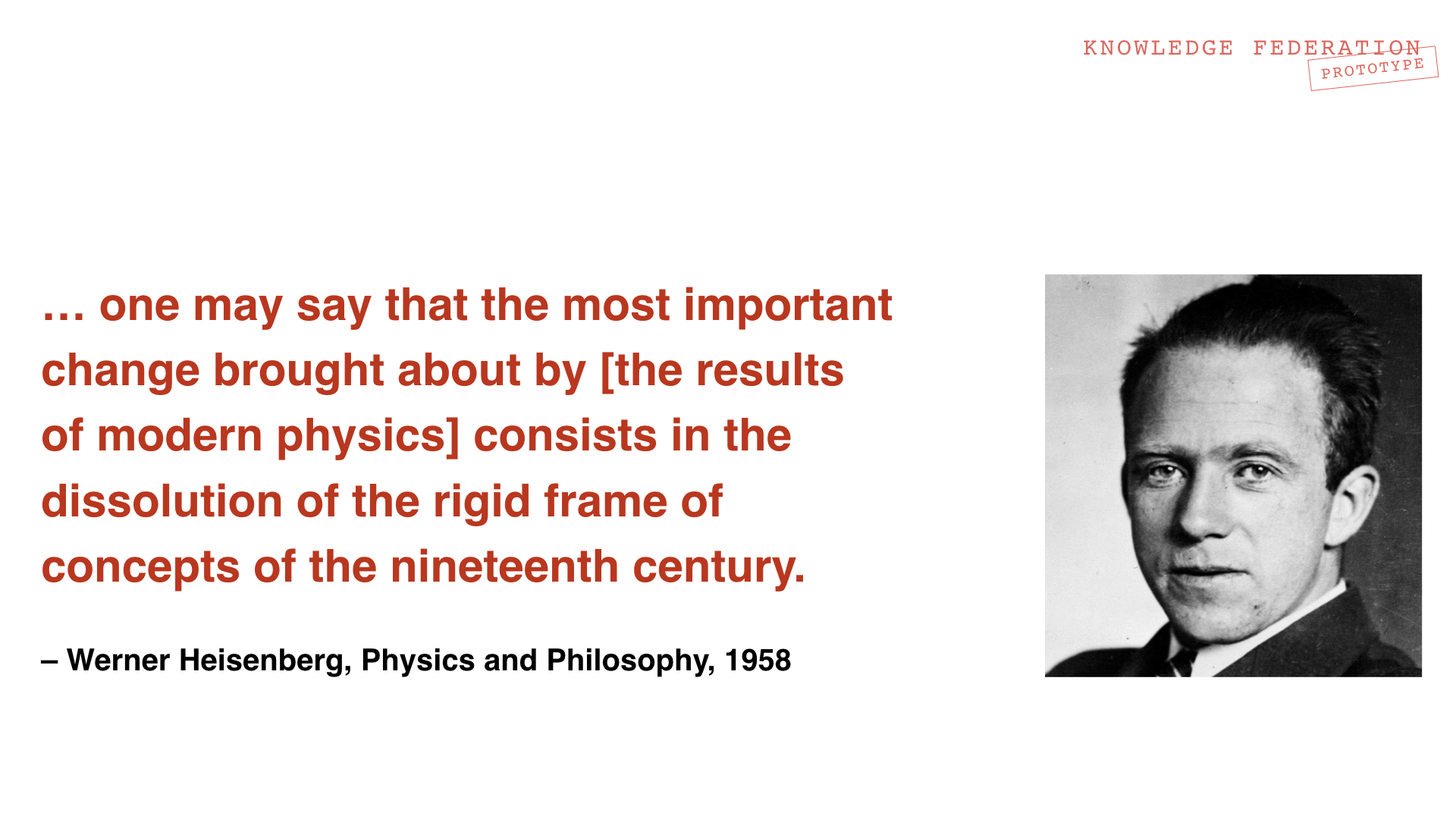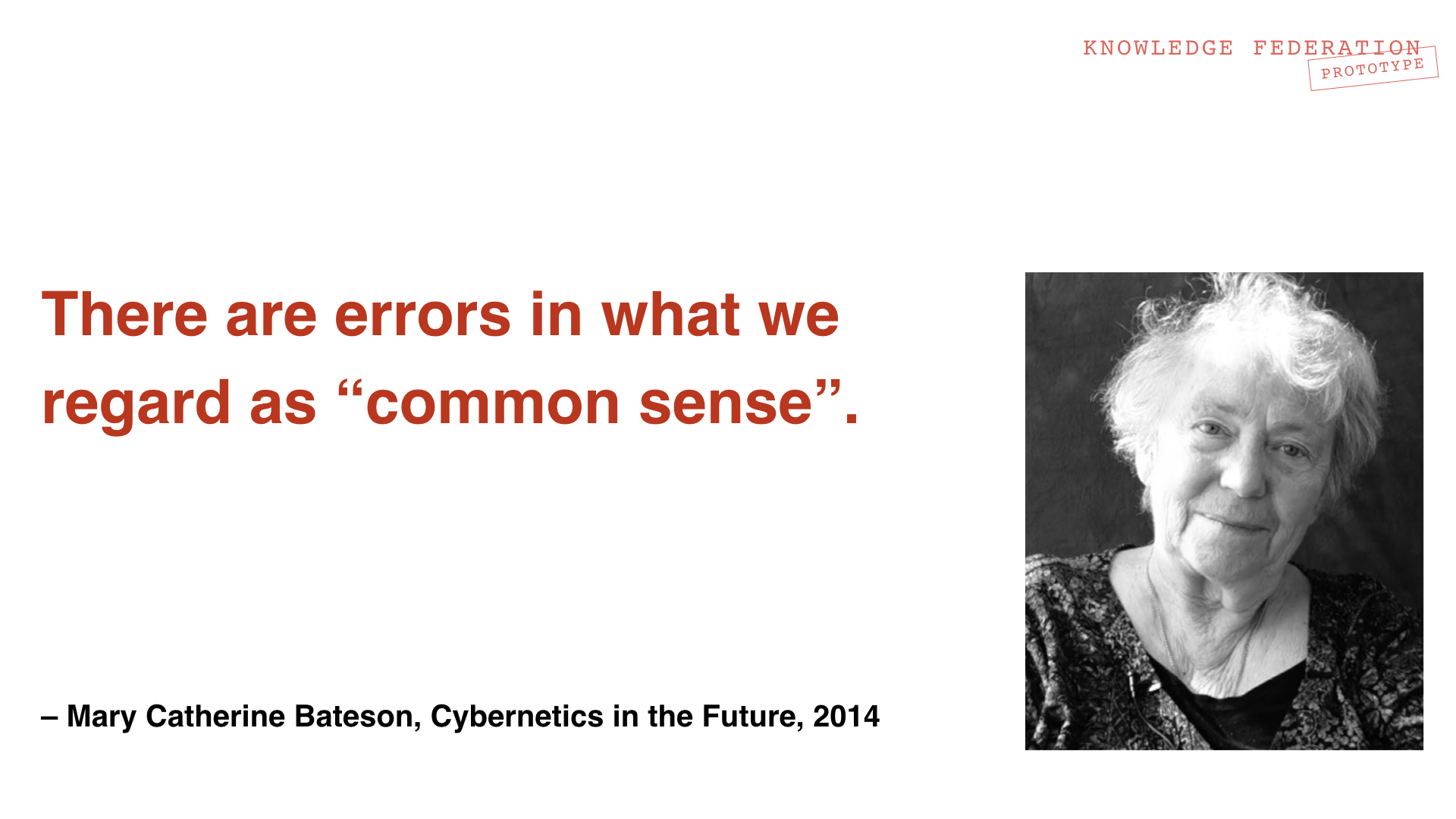Holotopia
Contents
HOLOTOPIA
An Actionable Strategy
Imagine...
You are about to board a bus for a long night ride, when you notice the flickering streaks of light emanating from two wax candles, placed where the headlights of the bus are expected to be. Candles? As headlights?
Of course, the idea of candles as headlights is absurd. So why propose it?
Because on a much larger scale this absurdity has become reality.
The Modernity ideogram renders the essence of our contemporary situation by depicting our society as an accelerating bus without a steering wheel, and the way we look at the world, try to comprehend and handle it as guided by a pair of candle headlights.
Scope
We have just seen, by highlighting the historicity of the academic approach to knowledge to reach the socialized reality insight, that the academic tradition—now instituted as the modern university—finds itself in a much larger and more central social role than it was originally conceived for. We look up to the academia (and not to the Church and the tradition) to tell us how to look at the world, to be able to comprehend it and handle it.
That role, and question, carry an immense power!
It was by providing a completely new answer to that question, that the last "great cultural revival" came about.
Could a similar advent be in store for us today?
Diagnosis
How should we look at the world, to be able to comprehend it and handle it?
Nobody knows!
Of course, countess books and articles have been written about this theme since antiquity. But in spite of that—or should we rather say because of that—no consensus has been reached.
Meanwhile, the way we the people look at the world, try to comprehend and handle it, shaped itself spontaneously—from the scraps of the scientific ideas that were available around the middle of the 19th century, when Darwin and Newton as cultural heroes replaced Adam and Moses. What is today popularly considered as the "scientific" worldview shaped itself then—and remained largely unchanged.
As members of the homo sapiens species, this worldview makes us believe, we have the evolutionary privilege to be able to comprehend the world in causal terms, and to make rational choices based on such comprehension. Give us a correct model of the natural world, and we'll know exactly how to go about satisfying our needs (which we of course know, because we can experience them directly). But the traditional cultures, being unable to understand how the nature works, put a "ghost in the machine"—and made us pray to him to give us what we needed. Science corrected this error—and now we can satisfy our needs by manipulating the nature directly and correctly, with the help of technology.
It is this causal or "scientific" understanding of the world that makes us modern. Isn't that how we understood that women cannot fly on broomsticks?
From our collection of reasons why this way of looking at the world is neither scientific nor functional, we here mention two.
The first is that the nature is not a "machine".
The mechanistic or "classical" way of looking at the world that Newton and his colleagues developed in physics, which around the 19th century shaped the worldview of the masses, has been disproved and disowned by modern science. It has turned out that even physical phenomena exhibit the kinds of interdependence that cannot be understood in that way.
In "Physics and Philosophy", Werner Heisenberg, one of the progenitors of this research, described how "the narrow and rigid frame" as the way of looking at the world that our ancestors concocted from the 19th century science was damaging to culture, and in particular to religion and ethical norms on which the "human quality" depended. And how the prominence of "instrumental" thinking and values resulted, which Bauman called "adiaphorisation". Heisenberg explained how the modern physics disproved that worldview. Heisenberg expected that the largest impact of modern physics would be on culture—by allowing it to evolve further, by dissolving the narrow frame.
The second reason is that even complex "machines" ("classical" nonlinear dynamic systems) cannot be understood in causal terms.
It has been observed that the road to Hell is paved with good intentions. Research in systems sciences, and in particular in cybernetics, has explained that curious phenomenon in a scientific way: The "hell" (which you may imagine as global issues, or the 'destination' toward which our 'bus' is diagnosed to be headed) is largely a result of various "side effects" of our best efforts and "solutions", resulting from "nonlinearities" and "feedback loops" in natural and social systems we are trying to govern.
Hear Mary Catherine Bateson (cultural anthropologist and cybernetician, and the daughter of Margaret Mead and Gregory Bateson who pioneered both fields) say:
"The problem with Cybernetics is that it is not an academic discipline that belongs in a department. It is an attempt to correct an erroneous way of looking at the world, and at knowledge in general. (...) Universities do not have departments of epistemological therapy!"



